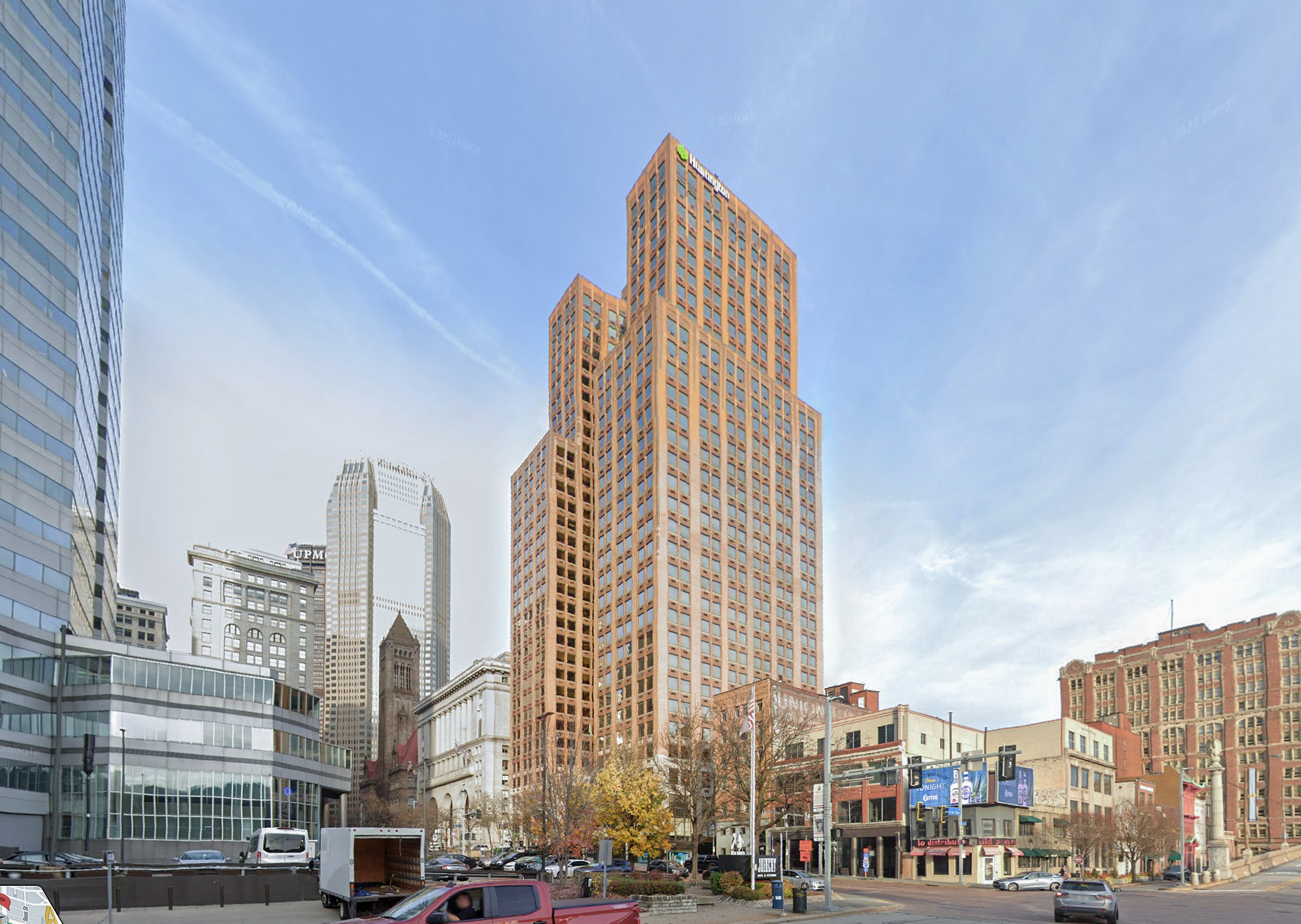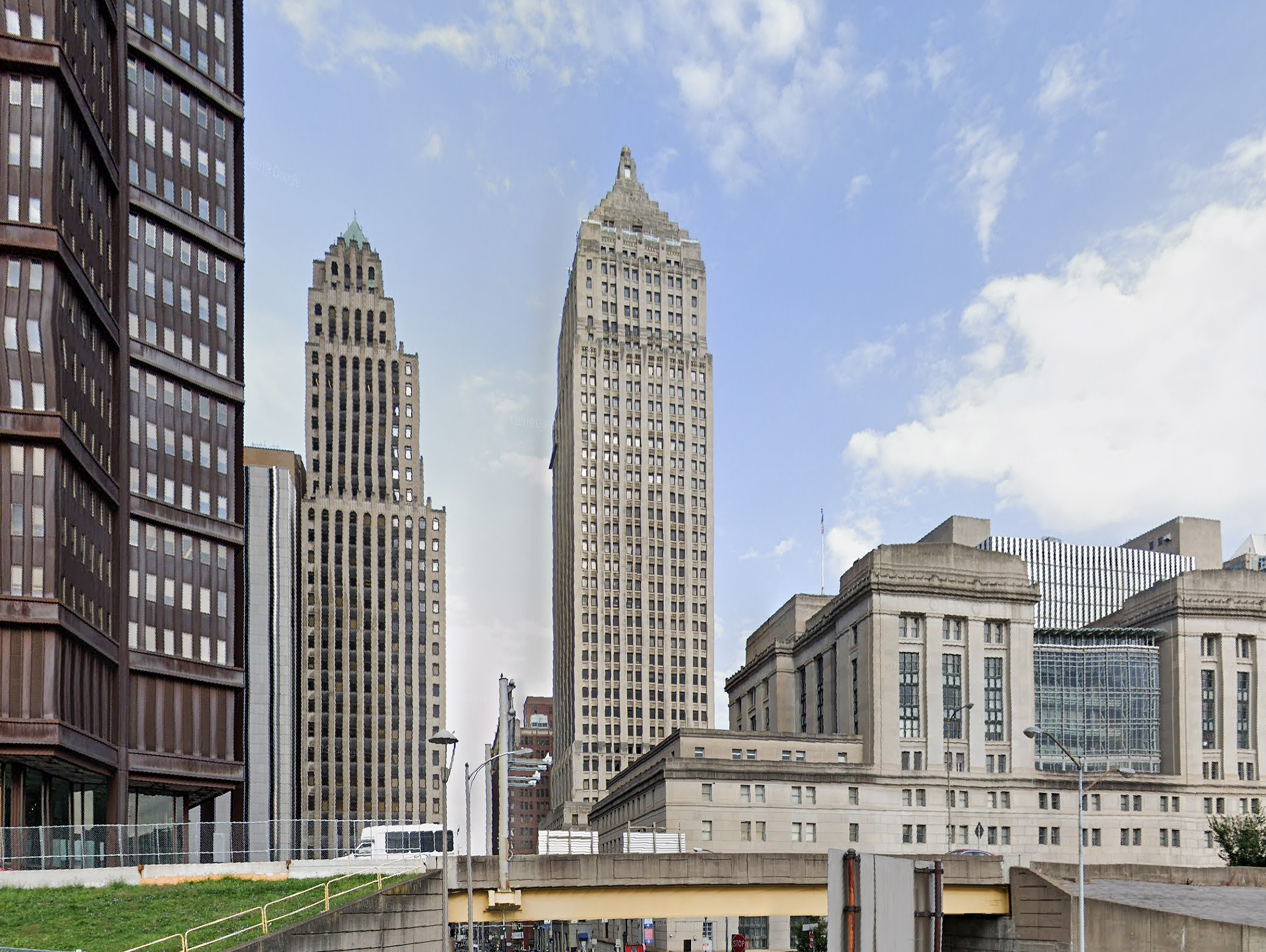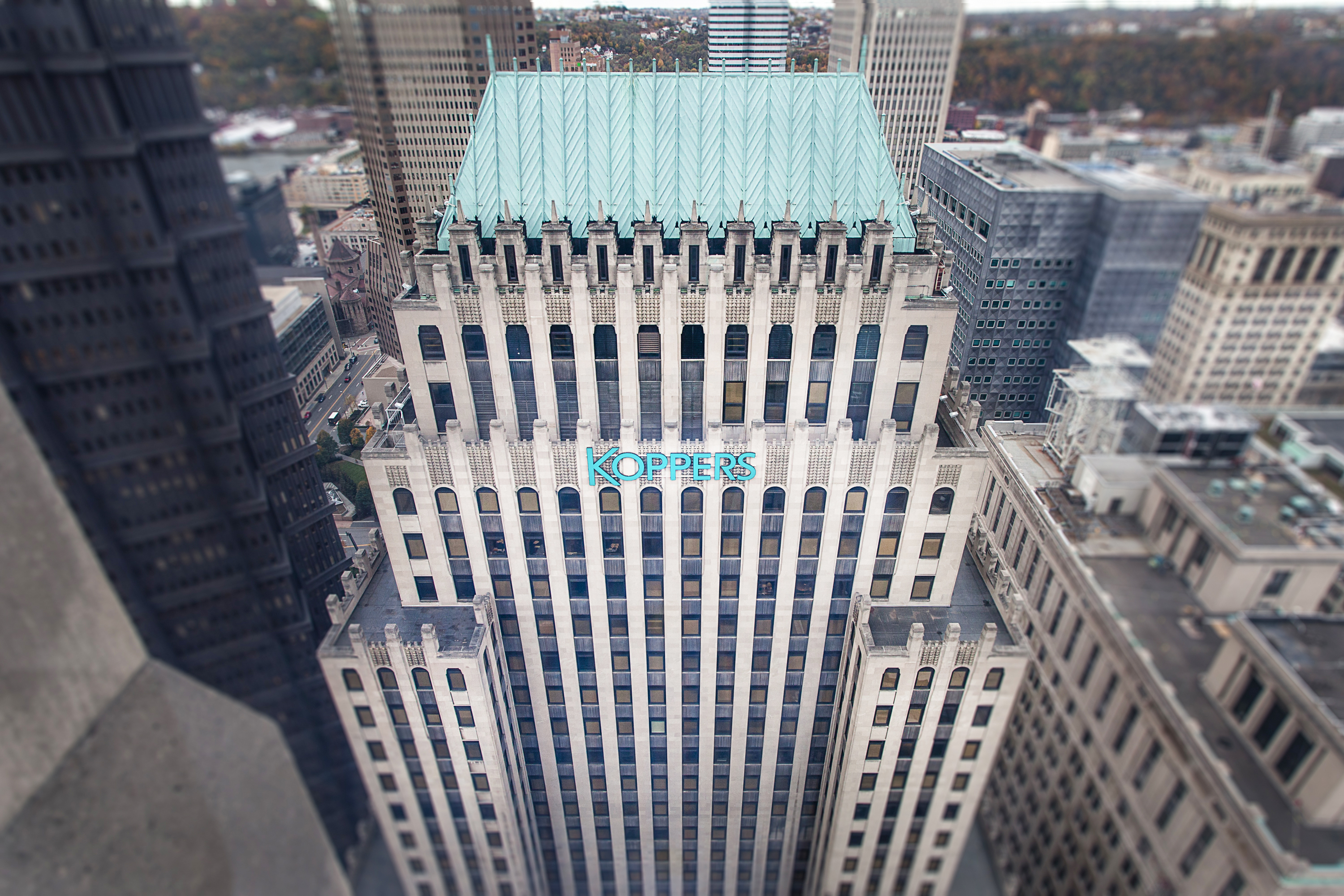The Grant Building is an Art-deco skyscraper designed by Henry Hornbostel and built between 1927 and 1930, for a reported $5.50 million dollars, in Pittsburgh, PA.
Its precise street address is 310 Grant Street, Pittsburgh, PA. You can also find it on the map here.
At the time of its completion in 1930 the Grant Building incorporated solutions that were quite advanced at the time, these included an illuminated beacon atop the building, flashing the word "Pittsburgh" in Morse code, which warned pilots flying at night of the skyscraper's presence. Less of a technological advancement, but still worth pointing out is the fact that every floor was equipped with a shower, something which was not common (and still isn't) for an office building.
The building underwent a major restoration in 2006.



